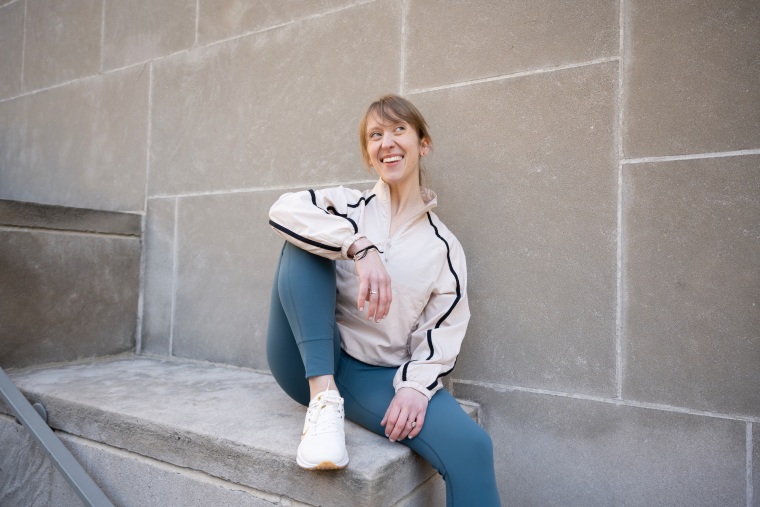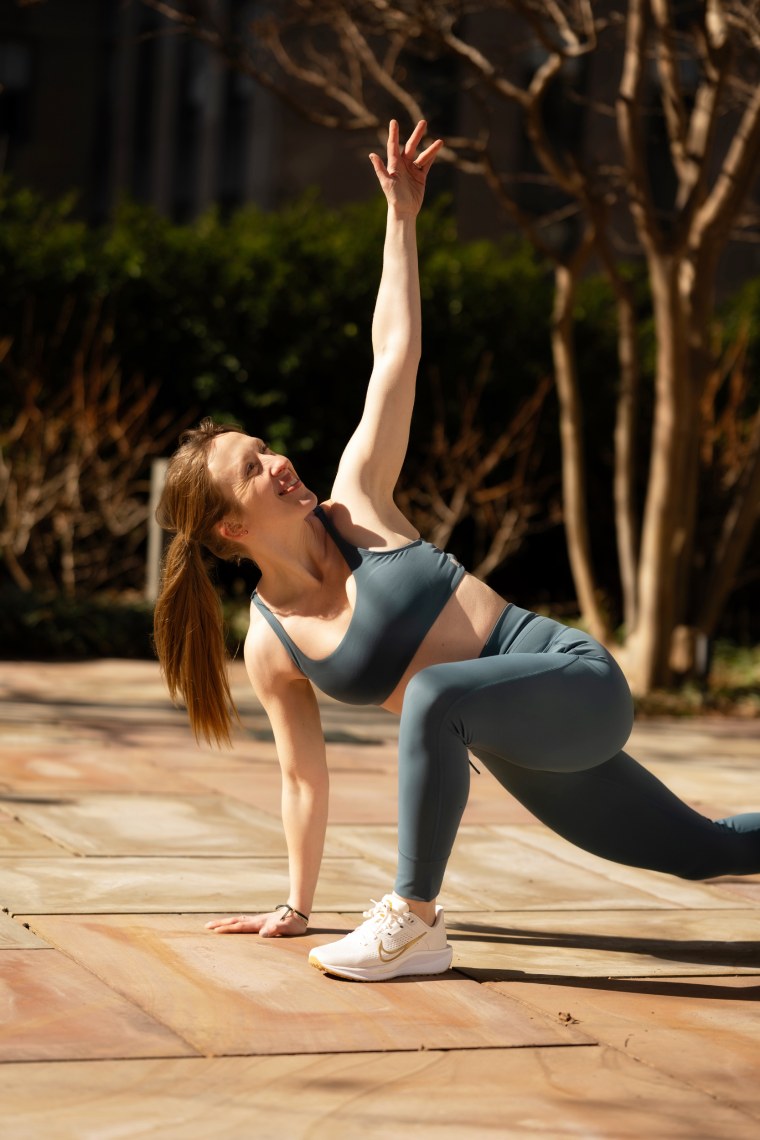A Journey Towards Strength
Growing up, I had no idea what “strength training” meant. I started high school in 2006, immersing myself in cross-country running, where the ideal physique was slender. Influential figures like the petite stars of “The Hills” and “Gossip Girl” graced the covers of magazines like CosmoGirl and Seventeen, promoting messages about getting “bikini-ready.” On reality TV shows like “America’s Next Top Model,” women’s bodies were critiqued harshly under public scrutiny.
Instead of focusing on the weight room, my main concern was fitting into a pair of low-rise jeans from Delia’s.
The only memory I have of lifting weights in my teenage years was during a gym date with a schoolmate, who awkwardly attempted to show me how to do a barbell bench press while sweating profusely.
Tyler Essary / TODAY
This experience with weightlifting left me disinterested. Lacking resources or strong female role models showing the advantages of strength, I associated weightlifting with a muscular physique—the complete opposite of what my magazines celebrated.
The reality is that strength training offers numerous benefits, such as improved bone, heart, and brain health, enhanced metabolism, and a better quality of life as we age, among other advantages. Yet, even if I’d known this back then, the mental images of strength training may have still deterred me.
Pioneers like Abbye “Pudgy” Stockton were among the first women to embrace weightlifting, helping to popularize Santa Monica’s Muscle Beach in the 1930s and 40s. However, it wasn’t until the 1980s, after Arnold Schwarzenegger’s appearance in the documentary “Pumping Iron,” that female weightlifting began to gain traction, as reported by the New York Times.
During this era, prominent female bodybuilders like Lisa Lyons, Carla Dunlap, and Rachel McLish emerged, which eventually led gyms to become co-ed.
Fast forward to the 2000s, and home workout DVDs centered on strength training became immensely popular, including titles like Tony Horton’s P90X and Jillian Michaels’ “Shred.” CrossFit also gained fame, introducing both men and women to weightlifting, albeit sometimes with injuries.
By the time I started college in 2010, I still didn’t envision myself in the weight room. Working out with a DVD in my dorm felt unrealistic, and CrossFit seemed daunting. After gaining the freshman 15, I fixated on weight loss and turned back to running in my senior year, completing my first half marathon after graduation.
Scanning through professional race photos, one captured my attention—I noticed my arms looked strong, so I purchased it and made it my Facebook profile picture. Years later, friends would express concern over how thin I appeared in that image.

Tyler Essary / TODAY
In 2017, while working as a social media editor for a health and fitness magazine, I shared my 40-pound weight loss journey from college. After it was published, I did what every editor warned against—I read the comments. The feedback was mixed, but one stark comment about looking better in the “before” image lingered in my mind.
The same year, I qualified for the New York City Marathon and increased my mileage. Despite feedback suggesting I should cross-train, I ignored it, focusing solely on running, alongside occasional spin and Barry’s classes. I was devoted to running, equating beauty with being skinny.
A New Path to Strength Training
When the pandemic hit in March 2020, my now-husband, Sam, and I spent a few months with his parents. Running was my initial source of comfort, but it soon felt isolating. I turned to social media, participating in live workouts led by fitness instructors and studio owners.
Before long, I was doing one or two workouts a day in the basement turned gym. I started sharing workout reviews on Instagram, hoping to provide a sense of normalcy to others.

Tyler Essary / TODAY
Some classes encouraged the use of weights, and my future father-in-law owned adjustable dumbbells. I thought, “I’ll just start with the 5-pounder.” Though I never increased the weight, simply making the choice to lift was a new beginning.
During this period, the idea of instructing fitness crossed my mind. As we stayed inside, I felt the urge to advance my skills, so I enrolled in an online course to become a certified group fitness instructor in July 2020. I announced this milestone on Instagram with a flex.
Eventually, Sam and I moved back into our own home, where I balanced my training with 5-pound workouts.
Overcoming My Fear of Heavy Weights
By January 2021, I passed my group fitness instructor exam from my bedroom. As Sam captured the moment, I realized something profound: I could no longer let the fear of lifting heavier weights hold me back—not just for myself, but for those I would teach.
I began offering free HIIT classes via Zoom for friends, family, and any interested Instagram followers. A year later, I secured a part-time position as an instructor at a new boxing and strength studio. In this role, I modeled exercises, corrected form, controlled the ambiance with lights and music, provided motivation, and led by example by lifting heavier weights.


